The electric commercial vehicle market is expected to grow from USD 80,250 million in 2022 to USD 2,046,899.13 million by 2032, at a CAGR of 38.25% during the forecast period 2023-2032.
Electric commercial vehicles are designed for commercial purposes such as transportation and distribution. These vehicles are built to fulfil the demand of the commercial industry. Electric commercial vehicles have lower operating costs as compared to diesel. Also, these vehicles help in the reduction of air pollution. These vehicles help to achieve sustainability goals and lower greenhouse gas emissions.
Rising Consumer Awareness is one of the major factors driving the electric commercial vehicle market. Increasing demand for eco-friendly vehicles will help the market to grow. In addition, the rising diesel prices are boosting the growth of the electric commercial vehicle market. However, the limited driving range and lack of charging infrastructure hamper the market's growth. Additionally, various Technological Innovations will allow the market to grow during the forecast period.
This study comprehensively analyses vehicle type, propulsion, battery range, end-use, and region. The vehicle type segment includes van, bus, truck and pickup truck. The bus segment registered the largest market share in 2022. The bus is the most usable commercial vehicle. Most people prefer the bus for daily commute. The propulsion segment comprises BEV, HEV, PHEV and FCEV. The BEV segment held the largest market share in 2022. BEVs emit fewer pollutants, and also, BEVs help companies to reduce their carbon footprint. The battery range segment comprises < 150 miles, 150–300 miles and > 300 miles. The < 150 miles segment held the largest market share in 2022. The < 150 miles includes transportation of goods within the city and nearby highways. For this purpose, vans and trucks of smaller sizes are used. The End-Use segment is classified into field services, refuse services, long-haul transportation, last-mile delivery, and distribution. The last-mile delivery segment generated the highest market revenue in 2022. It is mainly due to the rise in online sales and the development of policies to remove diesel vehicles to reduce carbon emissions.
The market has been divided into North America, Europe, Asia-Pacific, Middle East & Africa, and South America. The Asia-Pacific region held the highest market revenue in 2022 due to the presence of prominent players in the region. Moreover, the growing technological advancement drives the market's growth. In addition, the government's development of several favourable policies is boosting the region's growth. The North America region is anticipated to grow fastest over the forecast period. Growing population, technological advances, and increasing E-commerce will likely drive the region's growth.
Some of the notable players in the market are BYD Co., Daimler AG, Dongfeng Motor Company, Ebusco B.V., Ford Motor Company, Isuzu, Olectra Greentech Limited, Proterra, Inc., Rivian Automotive, Inc., Tata Motor Limited, Tesla, Inc, VDL Bus & Coach, Volvo Group, Workhorse Group Incorporated and Zhengzhou Yutong Group Co., among others.
Report Description:
1. Introduction
1.1. Objectives of the Study
1.2. Market Definition
1.3. Research Scope
1.4. Currency
1.5. Key Target Audience
2. Research Methodology and Assumptions
3. Executive Summary
4. Premium Insights
4.1. Porter’s Five Forces Analysis
4.2. Value Chain Analysis
4.3. Top Investment Pockets
4.3.1. Market Attractiveness Analysis by Vehicle Type
4.3.2. Market Attractiveness Analysis by Propulsion
4.3.3. Market Attractiveness Analysis by Battery Range
4.3.4. Market Attractiveness Analysis by End-Use
4.3.5. Market Attractiveness Analysis by Region
4.4. Industry Trends
5. Market Dynamics
5.1. Market Evaluation
5.2. Drivers
5.2.1. Rising Consumer Awareness
5.2.2. Partnerships and Collaborations
5.3. Restraints
5.3.1. Limited Driving Range and Charging Infrastructure
5.4. Opportunities
5.4.1. Technological Innovations
5.5. Challenges
5.5.1. Limited Manufacturing Capacity
6. Global Electric Commercial Vehicle Market Analysis and Forecast, By Vehicle Type
6.1. Segment Overview
6.2. Van
6.3. Bus
6.4. Truck
6.5. Pickup Truck
7. Global Electric Commercial Vehicle Market Analysis and Forecast, By Propulsion
7.1. Segment Overview
7.2. BEV
7.3. HEV
7.4. PHEV
7.5. FCEV
8. Global Electric Commercial Vehicle Market Analysis and Forecast, By Battery Range
8.1. Segment Overview
8.2. < 150 Miles
8.3. 150–300 Miles
8.4. > 300 Miles
9. Global Electric Commercial Vehicle Market Analysis and Forecast, By End-Use
9.1. Segment Overview
9.2. Field Services
9.3. Refuse Services
9.4. Long Haul Transportation
9.5. Last Mile Delivery
9.6. Distribution
10. Global Electric Commercial Vehicle Market Analysis and Forecast, By Regional Analysis
10.1. Segment Overview
10.2. North America
10.2.1. U.S.
10.2.2. Canada
10.2.3. Mexico
10.3. Europe
10.3.1. Germany
10.3.2. France
10.3.3. U.K.
10.3.4. Italy
10.3.5. Spain
10.4. Asia-Pacific
10.4.1. Japan
10.4.2. China
10.4.3. India
10.5. South America
10.5.1. Brazil
10.6. Middle East and Africa
10.6.1. UAE
10.6.2. South Africa
11. Global Electric Commercial Vehicle Market-Competitive Landscape
11.1. Overview
11.2. Market Share of Key Players in the Electric Commercial Vehicle Market
11.2.1. Global Company Market Share
11.2.2. North America Company Market Share
11.2.3. Europe Company Market Share
11.2.4. APAC Company Market Share
11.3. Competitive Situations and Trends
11.3.1. Product Launches and Developments
11.3.2. Partnerships, Collaborations, and Agreements
11.3.3. Mergers & Acquisitions
11.3.4. Expansions
12. Company Profiles
12.1. BYD Co.
12.1.1. Business Overview
12.1.2. Company Snapshot
12.1.3. Company Market Share Analysis
12.1.4. Company Product Portfolio
12.1.5. Recent Developments
12.1.6. SWOT Analysis
12.2. Daimler AG
12.2.1. Business Overview
12.2.2. Company Snapshot
12.2.3. Company Market Share Analysis
12.2.4. Company Product Portfolio
12.2.5. Recent Developments
12.2.6. SWOT Analysis
12.3. Dongfeng Motor Company
12.3.1. Business Overview
12.3.2. Company Snapshot
12.3.3. Company Market Share Analysis
12.3.4. Company Product Portfolio
12.3.5. Recent Developments
12.3.6. SWOT Analysis
12.4. Ebusco B.V.
12.4.1. Business Overview
12.4.2. Company Snapshot
12.4.3. Company Market Share Analysis
12.4.4. Company Product Portfolio
12.4.5. Recent Developments
12.4.6. SWOT Analysis
12.5. Ford Motor Company
12.5.1. Business Overview
12.5.2. Company Snapshot
12.5.3. Company Market Share Analysis
12.5.4. Company Product Portfolio
12.5.5. Recent Developments
12.5.6. SWOT Analysis
12.6. Isuzu
12.6.1. Business Overview
12.6.2. Company Snapshot
12.6.3. Company Market Share Analysis
12.6.4. Company Product Portfolio
12.6.5. Recent Developments
12.6.6. SWOT Analysis
12.7. Olectra Greentech Limited
12.7.1. Business Overview
12.7.2. Company Snapshot
12.7.3. Company Market Share Analysis
12.7.4. Company Product Portfolio
12.7.5. Recent Developments
12.7.6. SWOT Analysis
12.8. Proterra, Inc.
12.8.1. Business Overview
12.8.2. Company Snapshot
12.8.3. Company Market Share Analysis
12.8.4. Company Product Portfolio
12.8.5. Recent Developments
12.8.6. SWOT Analysis
12.9. Rivian Automotive, Inc.
12.9.1. Business Overview
12.9.2. Company Snapshot
12.9.3. Company Market Share Analysis
12.9.4. Company Product Portfolio
12.9.5. Recent Developments
12.9.6. SWOT Analysis
12.10. Tata Motor Limited
12.10.1. Business Overview
12.10.2. Company Snapshot
12.10.3. Company Market Share Analysis
12.10.4. Company Product Portfolio
12.10.5. Recent Developments
12.10.6. SWOT Analysis
12.11. Tesla, Inc
12.11.1. Business Overview
12.11.2. Company Snapshot
12.11.3. Company Market Share Analysis
12.11.4. Company Product Portfolio
12.11.5. Recent Developments
12.11.6. SWOT Analysis
12.12. VDL Bus & Coach
12.12.1. Business Overview
12.12.2. Company Snapshot
12.12.3. Company Market Share Analysis
12.12.4. Company Product Portfolio
12.12.5. Recent Developments
12.12.6. SWOT Analysis
12.13. Volvo Group
12.13.1. Business Overview
12.13.2. Company Snapshot
12.13.3. Company Market Share Analysis
12.13.4. Company Product Portfolio
12.13.5. Recent Developments
12.13.6. SWOT Analysis
12.14. Workhorse Group Incorporated
12.14.1. Business Overview
12.14.2. Company Snapshot
12.14.3. Company Market Share Analysis
12.14.4. Company Product Portfolio
12.14.5. Recent Developments
12.14.6. SWOT Analysis
12.15. Zhengzhou Yutong Group Co.
12.15.1. Business Overview
12.15.2. Company Snapshot
12.15.3. Company Market Share Analysis
12.15.4. Company Product Portfolio
12.15.5. Recent Developments
12.15.6. SWOT Analysis
List of Table
1. Global Electric Commercial Vehicle Market, By Vehicle Type, 2019-2032 (USD Million) (Units)
2. Global Van, Electric Commercial Vehicle Market, By Region, 2019-2032 (USD Million) (Units)
3. Global Bus, Electric Commercial Vehicle Market, By Region, 2019-2032 (USD Million) (Units)
4. Global Truck, Electric Commercial Vehicle Market, By Region, 2019-2032 (USD Million) (Units)
5. Global Pickup Truck, Electric Commercial Vehicle Market, By Region, 2019-2032 (USD Million) (Units)
6. Global Electric Commercial Vehicle Market, By Propulsion, 2019-2032 (USD Million) (Units)
7. Global BEV, Electric Commercial Vehicle Market, By Region, 2019-2032 (USD Million) (Units)
8. Global HEV, Electric Commercial Vehicle Market, By Region, 2019-2032 (USD Million) (Units)
9. Global PHEV, Electric Commercial Vehicle Market, By Region, 2019-2032 (USD Million) (Units)
10. Global FCEV, Electric Commercial Vehicle Market, By Region, 2019-2032 (USD Million) (Units)
11. Global Electric Commercial Vehicle Market, By Battery Range, 2019-2032 (USD Million) (Units)
12. Global < 150 Miles, Commercial Vehicle Market, By Region, 2019-2032 (USD Million) (Units)
13. Global 150–300 Miles, Electric Commercial Vehicle Market, By Region, 2019-2032 (USD Million) (Units)
14. Global > 300 Miles, Electric Commercial Vehicle Market, By Region, 2019-2032 (USD Million) (Units)
15. Global Electric Commercial Vehicle Market, By End-Use, 2019-2032 (USD Million) (Units)
16. Global Field Services, Commercial Vehicle Market, By Region, 2019-2032 (USD Million) (Units)
17. Global Refuse Services, Electric Commercial Vehicle Market, By Region, 2019-2032 (USD Million) (Units)
18. Global Long Haul Transportation, Electric Commercial Vehicle Market, By Region, 2019-2032 (USD Million) (Units)
19. Global Last Mile Delivery, Electric Commercial Vehicle Market, By Region, 2019-2032 (USD Million) (Units)
20. Global Distribution, Electric Commercial Vehicle Market, By Region, 2019-2032 (USD Million) (Units)
21. Global Electric Commercial Vehicle Market, By Region, 2019-2032 (USD Million) (Units)
22. North America Electric Commercial Vehicle Market, By Vehicle Type, 2019-2032 (USD Million) (Units)
23. North America Electric Commercial Vehicle Market, By Propulsion, 2019-2032 (USD Million) (Units)
24. North America Electric Commercial Vehicle Market, By Battery Range, 2019-2032 (USD Million) (Units)
25. North America Electric Commercial Vehicle Market, By End-Use, 2019-2032 (USD Million) (Units)
26. U.S. Electric Commercial Vehicle Market, By Vehicle Type, 2019-2032 (USD Million) (Units)
27. U.S. Electric Commercial Vehicle Market, By Propulsion, 2019-2032 (USD Million) (Units)
28. U.S. Electric Commercial Vehicle Market, By Battery Range, 2019-2032 (USD Million) (Units)
29. U.S. Electric Commercial Vehicle Market, By End-Use, 2019-2032 (USD Million) (Units)
30. Canada Electric Commercial Vehicle Market, By Vehicle Type, 2019-2032 (USD Million) (Units)
31. Canada Electric Commercial Vehicle Market, By Propulsion, 2019-2032 (USD Million) (Units)
32. Canada Electric Commercial Vehicle Market, By Battery Range, 2019-2032 (USD Million) (Units)
33. Canada Electric Commercial Vehicle Market, By End-Use, 2019-2032 (USD Million) (Units)
34. Mexico Electric Commercial Vehicle Market, By Vehicle Type, 2019-2032 (USD Million) (Units)
35. Mexico Electric Commercial Vehicle Market, By Propulsion, 2019-2032 (USD Million) (Units)
36. Mexico Electric Commercial Vehicle Market, By Battery Range, 2019-2032 (USD Million) (Units)
37. Mexico Electric Commercial Vehicle Market, By End-Use, 2019-2032 (USD Million) (Units)
38. Europe Electric Commercial Vehicle Market, By Vehicle Type, 2019-2032 (USD Million) (Units)
39. Europe Electric Commercial Vehicle Market, By Propulsion, 2019-2032 (USD Million) (Units)
40. Europe Electric Commercial Vehicle Market, By Battery Range, 2019-2032 (USD Million) (Units)
41. Europe Electric Commercial Vehicle Market, By End-Use, 2019-2032 (USD Million) (Units)
42. Germany Electric Commercial Vehicle Market, By Vehicle Type, 2019-2032 (USD Million) (Units)
43. Germany Electric Commercial Vehicle Market, By Propulsion, 2019-2032 (USD Million) (Units)
44. Germany Electric Commercial Vehicle Market, By Battery Range, 2019-2032 (USD Million) (Units)
45. Germany Electric Commercial Vehicle Market, By End-Use, 2019-2032 (USD Million) (Units)
46. France Electric Commercial Vehicle Market, By Vehicle Type, 2019-2032 (USD Million) (Units)
47. France Electric Commercial Vehicle Market, By Propulsion, 2019-2032 (USD Million) (Units)
48. France Electric Commercial Vehicle Market, By Battery Range, 2019-2032 (USD Million) (Units)
49. France Electric Commercial Vehicle Market, By End-Use, 2019-2032 (USD Million) (Units)
50. U.K. Electric Commercial Vehicle Market, By Vehicle Type, 2019-2032 (USD Million) (Units)
51. U.K. Electric Commercial Vehicle Market, By Propulsion, 2019-2032 (USD Million) (Units)
52. U.K. Electric Commercial Vehicle Market, By Battery Range, 2019-2032 (USD Million) (Units)
53. U.K. Electric Commercial Vehicle Market, By End-Use, 2019-2032 (USD Million) (Units)
54. Italy Electric Commercial Vehicle Market, By Vehicle Type, 2019-2032 (USD Million) (Units)
55. Italy Electric Commercial Vehicle Market, By Propulsion, 2019-2032 (USD Million) (Units)
56. Italy Electric Commercial Vehicle Market, By Battery Range, 2019-2032 (USD Million) (Units)
57. Italy Electric Commercial Vehicle Market, By End-Use, 2019-2032 (USD Million) (Units)
58. Spain Electric Commercial Vehicle Market, By Vehicle Type, 2019-2032 (USD Million) (Units)
59. Spain Electric Commercial Vehicle Market, By Propulsion, 2019-2032 (USD Million) (Units)
60. Spain Electric Commercial Vehicle Market, By Battery Range, 2019-2032 (USD Million) (Units)
61. Spain Electric Commercial Vehicle Market, By End-Use, 2019-2032 (USD Million) (Units)
62. Asia Pacific Electric Commercial Vehicle Market, By Vehicle Type, 2019-2032 (USD Million) (Units)
63. Asia Pacific Electric Commercial Vehicle Market, By Propulsion, 2019-2032 (USD Million) (Units)
64. Asia Pacific Electric Commercial Vehicle Market, By Battery Range, 2019-2032 (USD Million) (Units)
65. Asia Pacific Electric Commercial Vehicle Market, By End-Use, 2019-2032 (USD Million) (Units)
66. Japan Electric Commercial Vehicle Market, By Vehicle Type, 2019-2032 (USD Million) (Units)
67. Japan Electric Commercial Vehicle Market, By Propulsion, 2019-2032 (USD Million) (Units)
68. Japan Electric Commercial Vehicle Market, By Battery Range, 2019-2032 (USD Million) (Units)
69. Japan Electric Commercial Vehicle Market, By End-Use, 2019-2032 (USD Million) (Units)
70. China Electric Commercial Vehicle Market, By Vehicle Type, 2019-2032 (USD Million) (Units)
71. China Electric Commercial Vehicle Market, By Propulsion, 2019-2032 (USD Million) (Units)
72. China Electric Commercial Vehicle Market, By Battery Range, 2019-2032 (USD Million) (Units)
73. China Electric Commercial Vehicle Market, By End-Use, 2019-2032 (USD Million) (Units)
74. India Electric Commercial Vehicle Market, By Vehicle Type, 2019-2032 (USD Million) (Units)
75. India Electric Commercial Vehicle Market, By Propulsion, 2019-2032 (USD Million) (Units)
76. India Electric Commercial Vehicle Market, By Battery Range, 2019-2032 (USD Million) (Units)
77. India Electric Commercial Vehicle Market, By End-Use, 2019-2032 (USD Million) (Units)
78. South America Electric Commercial Vehicle Market, By Vehicle Type, 2019-2032 (USD Million) (Units)
79. South America Electric Commercial Vehicle Market, By Propulsion, 2019-2032 (USD Million) (Units)
80. South America Electric Commercial Vehicle Market, By Battery Range, 2019-2032 (USD Million) (Units)
81. South America Electric Commercial Vehicle Market, By End-Use, 2019-2032 (USD Million) (Units)
82. Brazil Electric Commercial Vehicle Market, By Vehicle Type, 2019-2032 (USD Million) (Units)
83. Brazil Electric Commercial Vehicle Market, By Propulsion, 2019-2032 (USD Million) (Units)
84. Brazil Electric Commercial Vehicle Market, By Battery Range, 2019-2032 (USD Million) (Units)
85. Brazil Electric Commercial Vehicle Market, By End-Use, 2019-2032 (USD Million) (Units)
86. Middle East and Africa Electric Commercial Vehicle Market, By Vehicle Type, 2019-2032 (USD Million) (Units)
87. Middle East and Africa Electric Commercial Vehicle Market, By Propulsion, 2019-2032 (USD Million) (Units)
88. Middle East and Africa Electric Commercial Vehicle Market, By Battery Range, 2019-2032 (USD Million) (Units)
89. Middle East and Africa Electric Commercial Vehicle Market, By End-Use, 2019-2032 (USD Million) (Units)
90. UAE Electric Commercial Vehicle Market, By Vehicle Type, 2019-2032 (USD Million) (Units)
91. UAE Electric Commercial Vehicle Market, By Propulsion, 2019-2032 (USD Million) (Units)
92. UAE Electric Commercial Vehicle Market, By Battery Range, 2019-2032 (USD Million) (Units)
93. UAE Electric Commercial Vehicle Market, By End-Use, 2019-2032 (USD Million) (Units)
94. South Africa Electric Commercial Vehicle Market, By Vehicle Type, 2019-2032 (USD Million) (Units)
95. South Africa Electric Commercial Vehicle Market, By Propulsion, 2019-2032 (USD Million) (Units)
96. South Africa Electric Commercial Vehicle Market, By Battery Range, 2019-2032 (USD Million) (Units)
97. South Africa Electric Commercial Vehicle Market, By End-Use, 2019-2032 (USD Million) (Units)
List of Figures
1. Global Electric Commercial Vehicle Market Segmentation
2. Electric Commercial Vehicle Market: Research Methodology
3. Market Size Estimation Methodology: Bottom-Up Approach
4. Market Size Estimation Methodology: Top-Down Approach
5. Data Triangulation
6. Porter’s Five Forces Analysis
7. Value Chain Analysis
8. Global Electric Commercial Vehicle Market Attractiveness Analysis by Vehicle Type
9. Global Electric Commercial Vehicle Market Attractiveness Analysis by Propulsion
10. Global Electric Commercial Vehicle Market Attractiveness Analysis by Battery Range
11. Global Electric Commercial Vehicle Market Attractiveness Analysis by End-Use
12. Global Electric Commercial Vehicle Market Attractiveness Analysis by Region
13. Global Electric Commercial Vehicle Market: Dynamics
14. Global Electric Commercial Vehicle Market Share by Vehicle Type (2023 & 2032)
15. Global Electric Commercial Vehicle Market Share by Propulsion (2023 & 2032)
16. Global Electric Commercial Vehicle Market Share by Battery Range (2023 & 2032)
17. Global Electric Commercial Vehicle Market Share by End-Use (2023 & 2032)
18. Global Electric Commercial Vehicle Market Share by Regions (2023 & 2032)
19. Global Electric Commercial Vehicle Market Share by Company (2022)
Market research is a method of gathering, assessing and deducing data & information about a particular market. Market research is very crucial in these days. The techniques analyze about how a product/service can be offered to the market to its end-customers, observe the impact of that product/service based on the past customer experiences, and cater their needs and demands. Owing to the successful business ventures, accurate, relevant and thorough information is the base for all the organizations because market research report/study offers specific market related data & information about the industry growth prospects, perspective of the existing customers, and the overall market scenario prevailed in past, ongoing present and developing future. It allows the stakeholders and investors to determine the probability of a business before committing substantial resources to the venture. Market research helps in solving the marketing issues challenges that a business will most likely face.
Market research is valuable because of the following reasons:
Our research report features both the aspects; qualitative and quantitative. Qualitative part provides insights about the market driving forces, potential opportunities, customer’s demands and requirement which in turn help the companies to come up with new strategies in order to survive in the long run competition. The quantitative segment offers the most credible information related to the industry. Based on the data gathering, we use to derive the market size and estimate their future growth prospects on the basis of global, region and country.
Our market research process involves with the four specific stages.

Data Collection: This stage of the market research process involves with the gathering and collecting of the market/industry related data from the sources. There are basically two types of research methods:
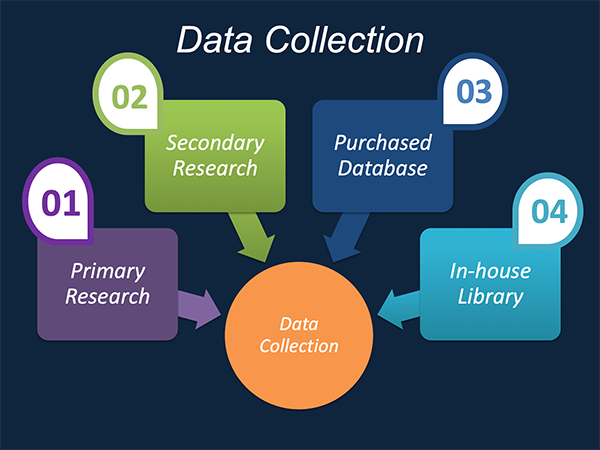
Data Synthesis: This stage includes the evaluation and assessment of all the data acquired from the primary and secondary research. It likewise includes in evaluating the information for any disparity watched while information gathering identified with the market. The data & information is gathered with consideration to the heterogeneity of sources. Scientific and statistical methods are implemented for synthesizing dissimilar information sets and provide the relevant data which is fundamental for formulating strategies. Our organization has broad involvement with information amalgamation where the information goes through different stages:


Market Formulation & Deduction: The last stage includes assigning the data & information in a suitable way in order to derive market size. Analyst reviews and domain based opinions based on holistic approach of market estimation combined with industry investigation additionally features a crucial role in this stage.
This stage includes with the finalization of the market size and numbers that we have gathered from primary and secondary research. With the data & information addition, we ensure that there is no gap in the market information. Market trend analysis is finished by our analysts by utilizing data extrapolation procedures, which give the most ideal figures to the market.
Data Validation: Validation is the most crucial step in the process. Validation & re-validation through scientifically designed technique and process that helps us finalize data-points to be used for final calculations. This stage also involves with the data triangulation process. Data triangulation generally implicates the cross validation and matching the data which has been collected from primary and secondary research methods.





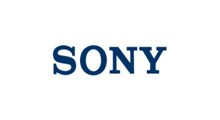

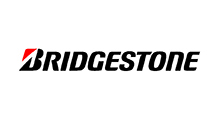

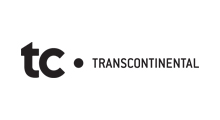















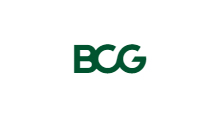




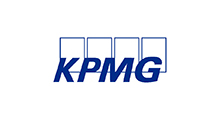
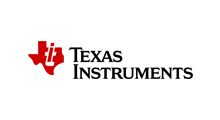



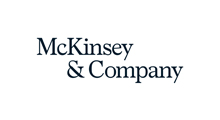









Free Customization
Countries can be added on demand
Free yearly update on purchase of Multi/Corporate User License
Companies served till date

We serve our customers 24x7 for 365 days through calls, emails and live chat options.

Huge database of exceptional market reports bringing market intelligence to your fingertips.

SSL enabled, we offer you various secured payment options for risk free purchase.